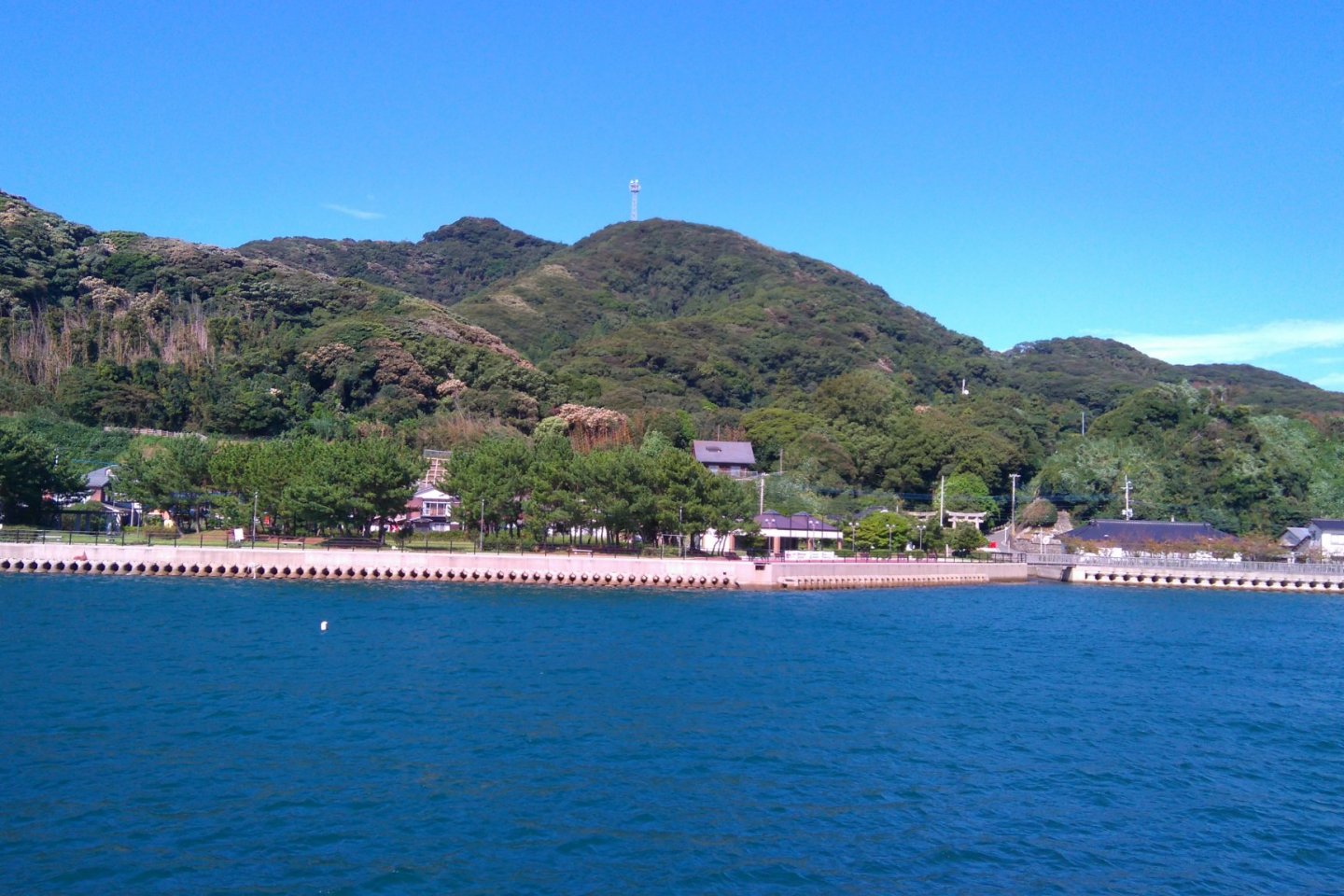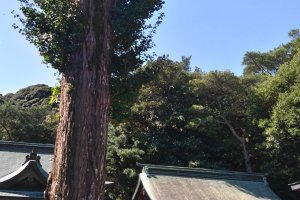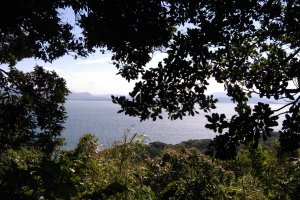Munakata Taisha is a shrine stronghold of three female goddesses, the three daughters of the Sun Goddess, Amaterasu, born of mist arising from the chewed up bits of a sword given Amaterasu by her brother, Susano.
The shrines are Okitsugu and Nakatsumiya on Okinoshima and Oshima Islands, and Hetsumiya in Munakata. I visited Nakatsumiya on Oshima. It was modest, like an unadorned woman, when you might be expecting something a bit more dressed up. One solitary ancient tree kept the Goddess company in her main shrine, with smaller shrines around it. Music of bubbling water came from a brook running by its side and continuing behind the shrine, where I followed a path dark with thick forest. Steps led up to lonely looking and tiny wooden kami sheds. I felt God in the comfort of the quiet, but don’t know whether it was male or female.
Adjacent to the shrine, the Kyushu Olle takes over attention with a lustrous mountain trail leading up to Mount Mitake, part of the Genkai National Park. The Olle originating from Jeju in Korea, is a network of nature-oriented trails across Kyushu’s prefectures, usually incorporating a local attraction, as with Oshima’s Nakatsu Shrine. The trail was steep at first, then leveled as I walked up, rather than getting steeper. An old geezer like me took only about 30 minutes to the observatory, even when stopping to tree hug and photograph foliage windows framing blue sky and sea. The trail proceeds through dense uncut vegetation to a Windmill Observatory, across from the island’s lighthouse. Cobweb lace spun across the path suggested no man had gone before me.
There were more anglers and bikers around Oshima than worshipers, which consisted of just a few older folks when I visited Nakatsumiya. Oshima is a pretty, scenic hamlet with only a supposed population of 700. Apart from the shrine itself, there are no overt manifestations that Oshima is the island of a goddess. There is nothing serious or somber about Oshima, no mysterious or mystical atmosphere.
It is said that Okinoshima’s Okitsumiya has this in plenty. Don’t rush there, ladies, it is forbidden to us. An irony, since it’s a Goddess that resides there. But men, too, are forbidden, except on May 27th, when men swim naked to Okinoshima in a purification ritual. These are the 200 most deeply religious Shinto devotees specially selected by the shrine’s priest, although I’m unclear how he does it, living alone all year round on the island with only the Goddess to talk to.
Reasons given for the embargo are that because women menstruate, they are unclean. Shintoism regards blood as impure. Ho hum. Another explanation is that women as child bearers should be protected from the dangers of the long voyage to Okinoshima. I read of discussion underway to get the ban lifted. It didn’t, anyway, stop Okinoshima from becoming a World Heritage Site in July 2017.
The Goddesses work hard. Besides being sea goddesses, they are protectors of the nation and its rulers. They can be prayed to for blessings of safety at sea and on the road. They represent an eternal and universal belief in God’s blessing, whether male or female.
From Togo Station, a bus takes you to the Konominato Ferry for Oshima. The bus passes Hetsumiya, where the third Goddess resides, in Munakata. This is the most popular and most accessible of the shrines, where the crowds are, which was evident from the tour buses docked outside. Many refer to Hetsumiya as Munakata Taisha. Here I suppose the Goddess gets her dues.




























